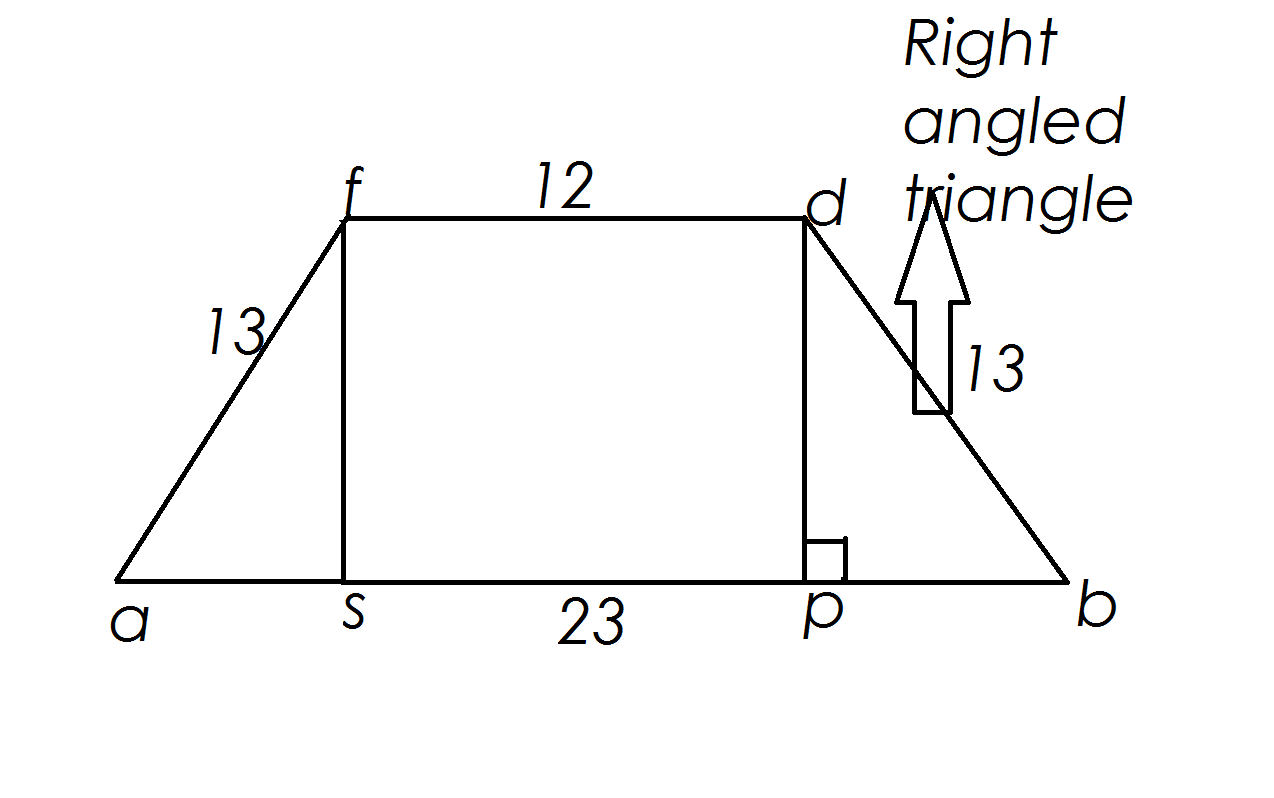An isosceles trapezoid has bases of length 23 and 12 centimeters and legs of length 13 centimeters. What is the area of the trapezoid to the nearest tenth?
1 Answer
Explanation:
Area of trapezium=
Where
Now in an isoceles trapezium the legs are equal ,and in this case they are in a length of
Now consider the diagram:

Now we will have a short sypnosis of the lengths:
Now we need to find the height:In this case the height is in a right triangle.So,we use the pythagorean theorem:
Where
But we should know the length of
We divide it by
So,
Now,
If we round it off to the nearest tenths we get

